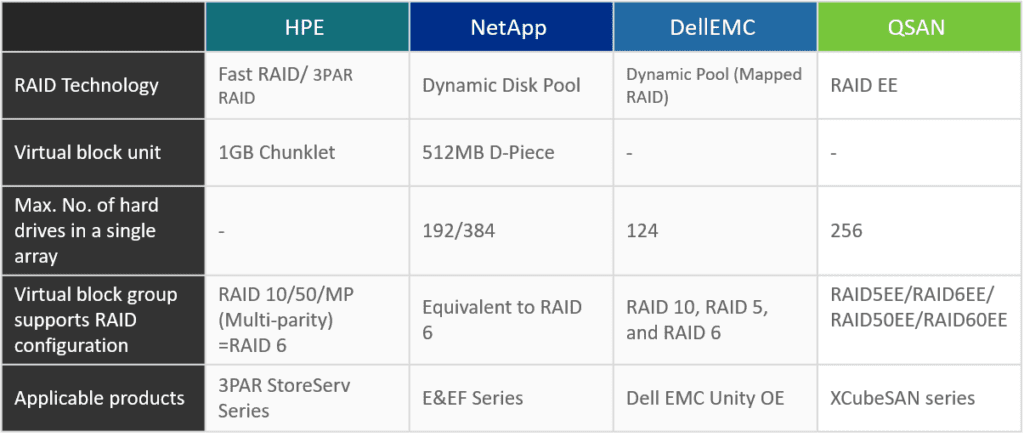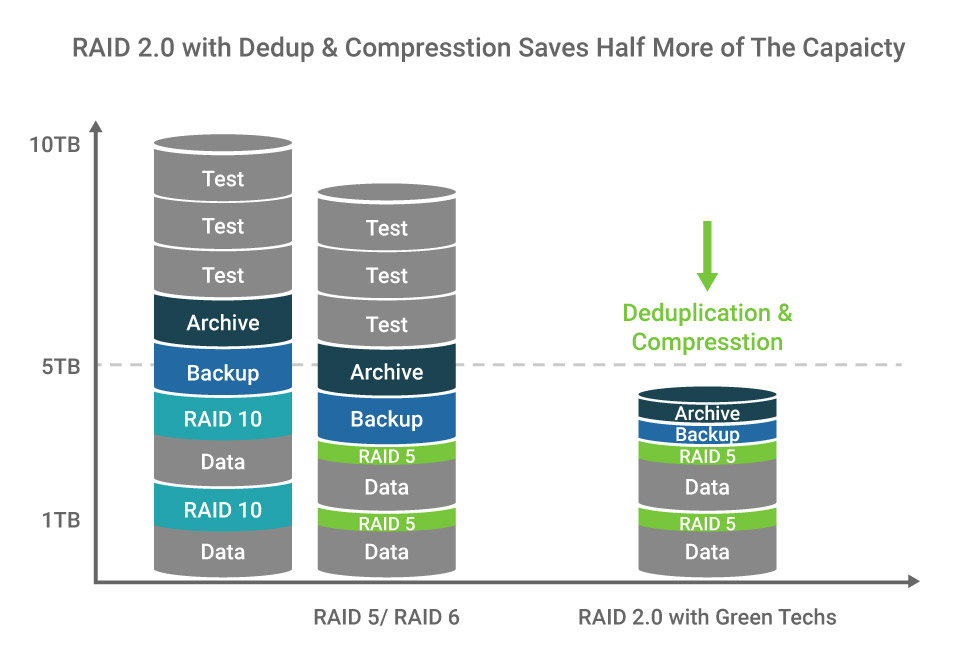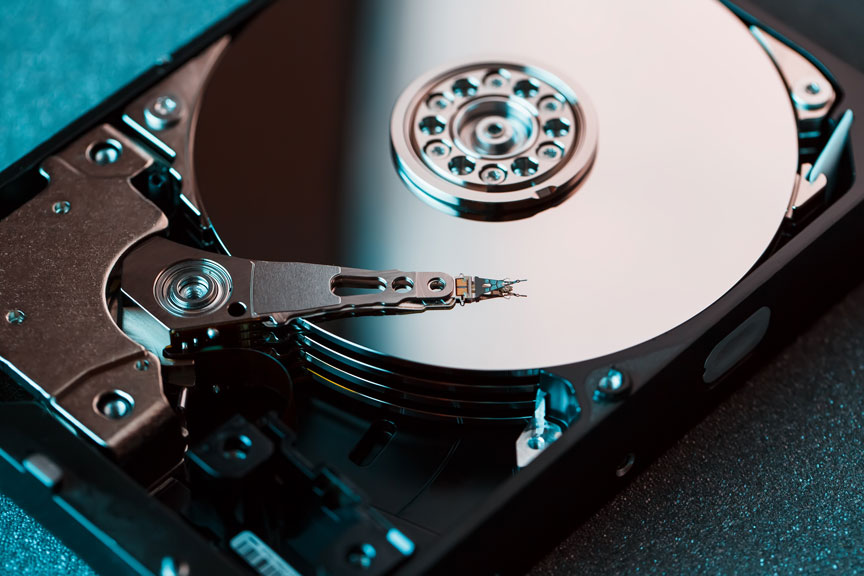Why High-Capacity Drives Matter
The era of 5G and edge computing is coming. The high transmission rate, low latency network, large number of devices connected, and continuous connection ability in the mobile state brought by 5G can meet the needs of various industries, creating more diversified innovative application scenarios and increasing the amount of digital data. Therefore, companies are gradually paying attention to the importance of high-capacity storage.
In the early days, enterprises chose small-capacity hard disks to construct storage devices for safety and the lowest fault tolerance. Small-capacity hard disks only need a short time to rebuild data in RAID. However, it also sacrifices storage space while ensuring the safe operation of the business and achieving the shortest rebuild rate.
Enterprises Need Both High-Capacity And Performance
With the development of AI and IoT in recent years, the smartness of the machine depends on the historical records used, and not only on the quantity but also on the quality. It needs to access a large amount of data quickly and do an in-depth analysis, so companies need to not only store data, but also accelerate access. Therefore, the demand for high-capacity storage and performance of enterprises has increased.
High-Capacity Disk Cause Long Rebuild Time?
As the capacity of hard disks increases, the data rebuild time for RAID has also been greatly extended, which is one of the most troublesome problems in current enterprise storage management. In the past, when the hard disk capacity was only tens to hundreds of GB, RAID rebuild was a task that could be completed in ten minutes or even tens of minutes. However, as the capacity of hard disks has grown to hundreds of GB or even TB levels, RAID rebuilds time has also skyrocketed to several hours or even tens of hours, which has become a major hidden danger in storage management.
New Generation of RAID
In simple terms, RAID is a data fault-tolerant mechanism among disks. The RAID mechanism is to ensure that when a hard disk failure occurs, the services running on it will not be interrupted and the data will not disappear.
The RAID architecture that has existed for more than 30 years is undergoing a wave of transformation. For TB-level high-capacity hard disks, the original RAID technology cannot solve the problem of long rebuild time. A new generation of RAID technology based on traditional block technology, RAID 2.0, is a way to solve the defects of traditional RAID.
The table below is the technology of different storage vendors for RAID 2.0, most vendors are dedicated to solving the bottleneck by enhancing traditional RAID.

Now we know RAID 2.0 enhances the storage application in many ways. How RAID 2.0 tech combined with another mechanism can bring for us?

When we switch from traditional RAID to RAID 2.0, we fasten the rebuild time to reduce the risk of data loss. Plus, data reduction technology which is deduplication and data compression to increase storage capacity is expected to further reduce the storage cost per unit of data. In this use case, we not only ensure data safety but also free up more space for more flexible data usage.
Cost-Effective Storage Solutions
In recent years, hard disk manufacturers such as WD, Seagate, Toshiba, Samsung, etc. have successively introduced high-capacity hard disks, creating a new milestone in more than 18TB high-capacity applications. Moreover, the number of high-capacity hard needs is less than small-capacity ones and it saves electricity. These latest products benefit enterprises of all sizes in terms of cost-effectiveness.
Consistent operating expenditures for disks of all sizes indicate that the use of high-capacity drives can significantly reduce the TCO per terabyte of storage. Thus, high-capacity hard drives are now becoming the highest TCO capacity drives.
Future-Proofing Your Storage Strategy
High-capacity hard disk applications are becoming more and more popular, and rebuild time then is the core concern for enterprises to ensure data safety. RAID 2.0 may help in minimizing the rebuilding time while larger capacity disks are used. In addition, techniques such as deduplication and compression optimize the read performance with affected little write performance and also provide the capacity saving advantage.
To sum it up, apply high-capacity hard disks for your storage without any hesitation based on the researches mentioned above!



